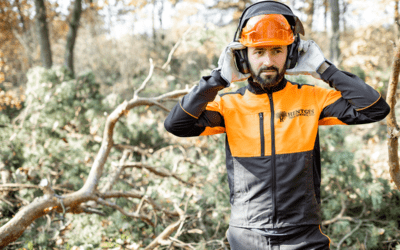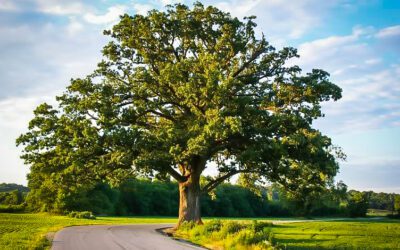Dead, dying or damaged trees are a huge concern for homeowners across the board. Not only is damage to your own property a worry, but the fear of the liability if your tree were to fall and damage a neighbor’s property or even hurt someone, can be stressful, costly and potentially cause for a lawsuit.
Having a professional come to your property and inspect your trees is the best way to spot any problems early and address them before a potential disaster occurs.
The following are some signs that your trees need to be inspected as soon as possible:

Hanging, Damaged, and Broken Limbs
While broken and dangling limbs should be obvious to spot, they aren’t always so easy to see. If your tree is leafed out there could be a damaged limb that’s view is obstructed by foliage. A professional will be able to check for any cracked, split, or broken limbs and determine the severity of the damage.

Dead Limbs
Dead limbs can often exist in your trees for years without you knowing. If they are infected with any disease, this can spread and infect the live tissue, causing the problem to worsen before you realize it. These dead limbs are at risk of falling and need to be addressed as soon as possible to prevent any accidents.

Changes in the bark
Ingrown bark tissues can develop when two stems grow too close together, creating a “V” formation that is more likely to split or break than a typical “U” formation. Proper pruning is the best way to prevent these dangerous formations from happening. During an inspection, a professional will look for signs of breakage, as well as peeling or discolored bark, that can be a telltale sign of disease.

Leaning Trees
While it may seem obvious that a tree that is leaning may fall, that isn’t always the case. There are several factors to consider when thinking about whether or not to take down a leaning tree. If it is leaning over your home, garage, fence, or an area that your family uses regularly, that is a reason for concern. However, if it is on a wooded or secluded area of your property, where falling wouldn’t present an immediate danger to your family or property, leaving it may be a better decision. Some trees do naturally lean, and it is not always a reason for concern. An expert can help you determine which situation your leaning tree is in.

Damaged Roots
Root damage is one of the most difficult issues to diagnose. It can take years for damaged root systems to show outward signs of sickness, even though the roots are the most important lifeline for your trees. Trees with root damage may not be taking in moisture as effectively as they should, and this can cause a whole host of problems with your trees. Many of these issues are evident only to professionals.

Exposed and Weak Trees
Often, during construction, wooded areas are cleared to make way for construction. By doing this, trees that used to be sheltered by neighboring trees are now exposed and are more susceptible to wind damage and other extreme weather stressors. These trees may grow to be strong and healthy all on their own, but they should be inspected regularly for several years to be sure.

Structural Issues
Many trees in suburban areas develop in wide open areas, exposed to lots of sunlight and with little competition for water and nutrients. While this sounds fantastic for the tree, it can cause the tree to develop a wide crown and many more large, lower branches and limbs than it would in a forest. A tree with this shape and a significant number of large limbs can cause the tree to structurally weaken as it grows. The best way to determine if your tree’s canopy is overburdened is to have it evaluated to see if it is currently, or could become, a risk.
While it is ALWAYS a great idea to keep a close eye on your trees, it is also a good idea to have a certified arborist assess them periodically. Their expertise can save you time, money, and potential injury in the future.
DO YOU NEED A TREE ASSESSMENT?
We’re here to serve you and we provide free estimates.



